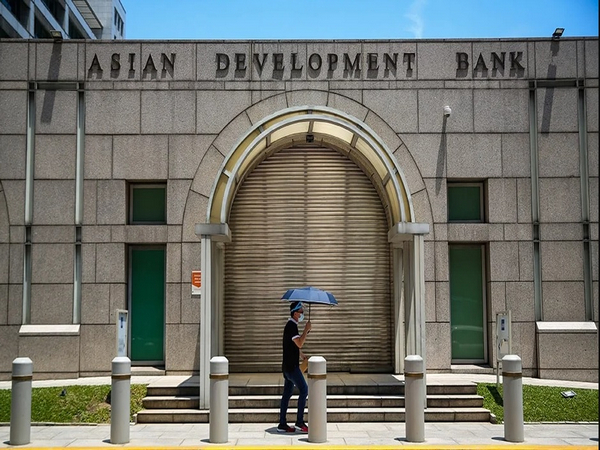ADB’s New Operating Model Shows Promise but Needs Clarity, Says Evaluation
ADB unveiled the NOM in June 2023, aiming to reorient the institution toward greater agility, innovation, and responsiveness amid increasingly complex development challenges in Asia and the Pacific.

- Country:
- Philippines
The Asian Development Bank’s (ADB) ambitious institutional transformation under its New Operating Model (NOM) is showing early signs of progress in enhancing cross-regional collaboration, private sector engagement, and climate action. However, a recent independent evaluation reveals that success hinges on clearer communication, streamlined internal processes, and greater inclusivity in implementation.
The findings were published by the Independent Evaluation Department (IED) of ADB, in a comprehensive review designed to inform real-time learning and strategic course correction as the multilateral development bank undergoes one of its most significant organizational reforms in decades.
Launched in 2023: A Response to a Changing Asia-Pacific
ADB unveiled the NOM in June 2023, aiming to reorient the institution toward greater agility, innovation, and responsiveness amid increasingly complex development challenges in Asia and the Pacific. These include climate change, economic shocks, geopolitical instability, and growing demands for sustainable infrastructure and private sector investment.
The NOM was structured around four core shifts:
-
Solutions-focused programming
-
New ways of working across teams and borders
-
Private sector development as a central priority
-
Integrated and enhanced climate action
While the reform drew praise for its bold vision, the IED’s process-focused evaluation—the first of its kind since NOM’s launch—has found that the model’s early implementation presents both opportunities and growing pains.
What’s Working: Cross-Regional Synergies and Climate Capacity
The evaluation acknowledges that NOM has succeeded in fostering cross-border collaboration, encouraging knowledge-sharing, and opening professional growth pathways—particularly for international staff. Several teams reported that cross-regional cooperation has led to richer project design, faster climate response, and more integrated financing solutions.
ADB has also made tangible strides in strengthening its climate-related capacities, positioning itself to play a more strategic role in supporting member countries’ climate adaptation and mitigation goals. This aligns with the bank’s broader commitment to providing $100 billion in climate finance by 2030.
What Needs Work: Communication Gaps and Operational Complexity
Despite these gains, the IED found that confusion around roles, decision-making authority, and approval processes is slowing down operations. One of the most frequently cited issues by staff was unclear lines of accountability, especially in cross-departmental projects.
“While the NOM encourages cross-border work and knowledge-sharing, the current structure often slows processes and contributes to confusion around accountability,” noted Evaluation Team Leader Erik Bloom.
Further, local and national staff reported mixed experiences with the reform. While some welcomed the chance for wider mobility and exposure, others expressed frustration over increased administrative burdens, a lack of inclusion in strategic discussions, and limited clarity about new expectations.
“ADB’s reform, based on a sound organizational review, was far-reaching,” said IED Director General Emmanuel Jimenez. “But for transformation to truly take hold, greater clarity on direction and open, two-way communication with staff will be key.”
Five Strategic Recommendations
To guide the next phase of NOM implementation, the IED issued five forward-looking recommendations:
-
Update the scope and timeline of the NOM to reflect current operational realities and feedback from staff and stakeholders.
-
Improve internal communication, with mechanisms for two-way dialogue between management and staff.
-
Align staff incentives with corporate objectives, ensuring that performance metrics support collaboration, innovation, and client responsiveness.
-
Simplify approval and accountability systems to reduce delays and improve transparency.
-
Clarify leadership roles and responsibilities to eliminate duplication and ambiguity in decision-making chains.
“These recommendations are aimed at helping ADB realize the full promise of the NOM, making it more responsive and inclusive,” said Co-Team Leader Gloria Paniagua. “This evaluation gives voice to the experiences of ADB’s staff during a major institutional shift.”
Staff Feedback: A Crucial Indicator of Reform Success
The IED emphasized that staff perspectives are central to the reform’s success. The report was based on extensive surveys, interviews, and document analysis, offering an in-depth look at how the NOM is affecting daily operations, staff morale, and service delivery.
According to the IED, the reform will only succeed if trust-building, feedback mechanisms, and adaptive management become embedded features of the new model.
Looking Ahead: Institutional Change and Development Impact
As ADB continues to scale its support across Asia and the Pacific, the NOM is intended to be a key driver of organizational resilience and development effectiveness. But achieving this goal will require strong leadership, timely adjustments, and a commitment to putting people and processes at the center of the change.
The IED report concludes on a cautiously optimistic note, recognizing the model’s potential but cautioning that it is still early days. How ADB addresses the growing pains of implementation will determine whether the NOM becomes a true game-changer or just another well-intentioned initiative.










